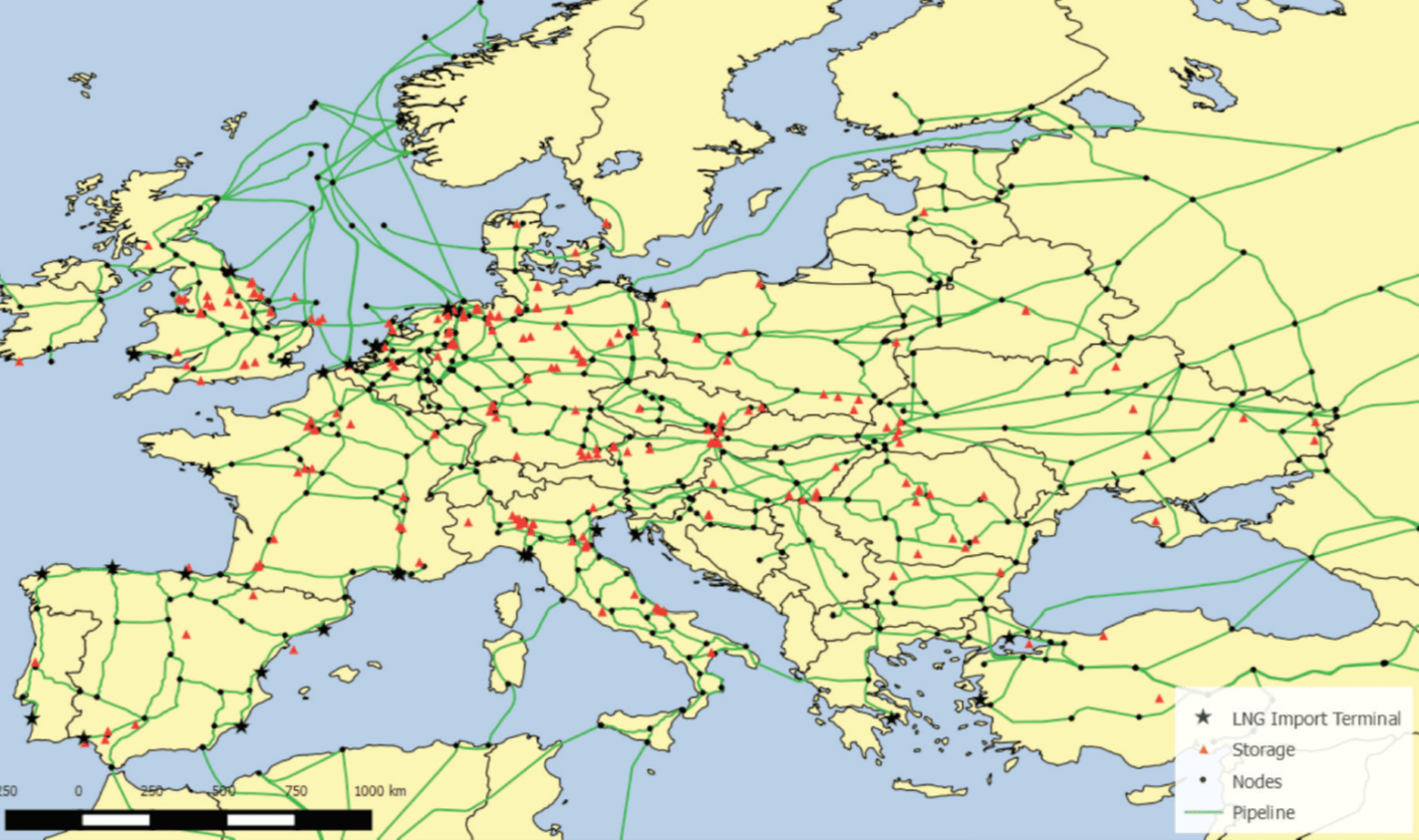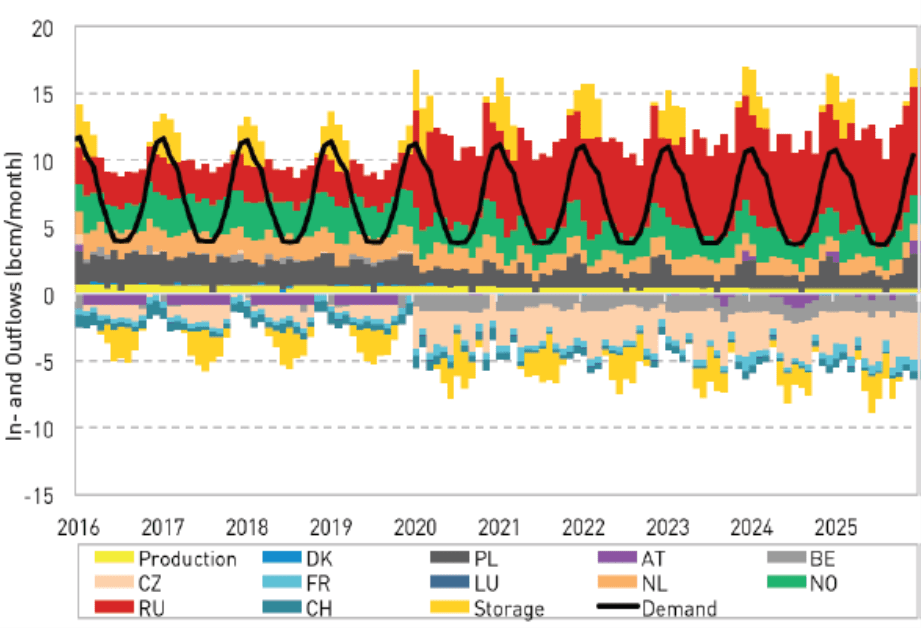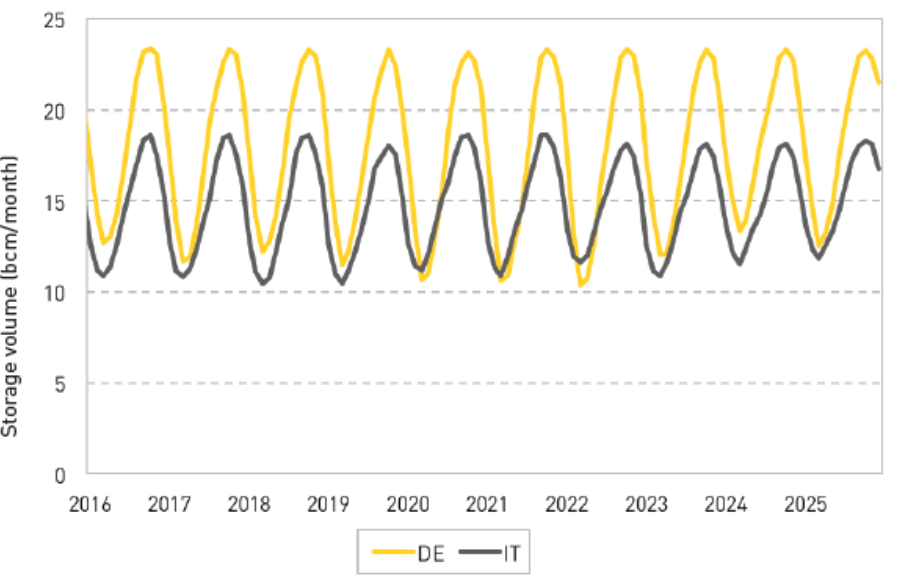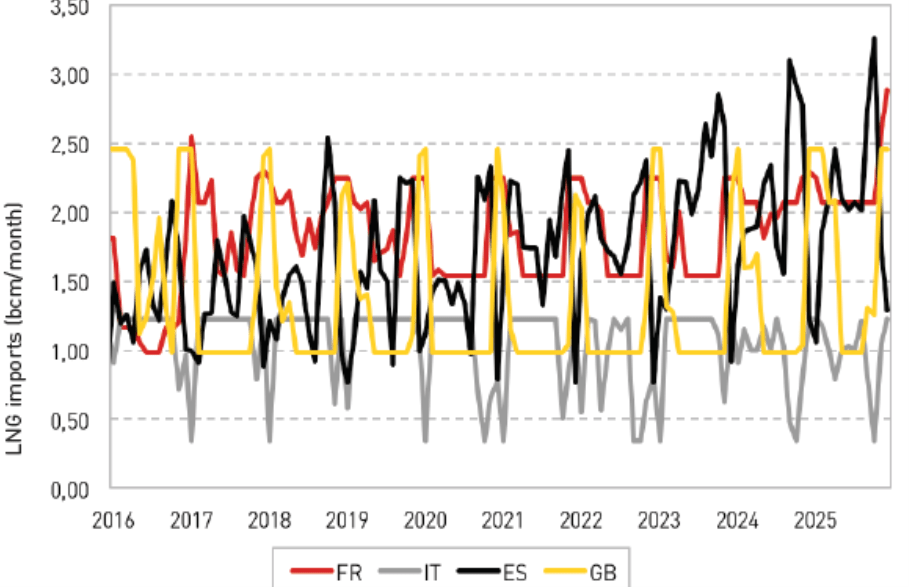TIGER is a simulation model of the European gas supply. The model is an excellent tool to analyze trade flows of natural gas under the restrictions of current or future gas infrastructure. TIGER simulates pipelines, natural gas storages, LNG regasification terminals and the corresponding interdependencies while minimizing total system costs. The results can be derived on a monthly or daily basis.
Currently, 40 countries are considered in TIGER. The European infrastructure data is stored in the geocoded database of EWI and is updated on a regular basis. Based on the geocoded information, a fast visualization of results is possible.

The model was developed in 2007 as part of an internal research project at the EWI and has been continuously improved since then. It has been used in a broad range of research and consulting projects. The European infrastructure is mapped in high detail:
Furthermore, long-term contracts as well as entry-exit tariffs between hub regions are included in the model.

TIGER simulates the economically optimal, physical and traded natural gas flows. Based on the optimal flows, existing and potential bottlenecks in the pipeline grid can be identified. Furthermore, the usage of natural gas storages and LNG terminals is included in the model output.

TIGER enables analyses examining the security of supply of the European natural gas markets. For instance, unforeseen developments such as a cold spell or the failure of a supplier or of an infrastructure element can be simulated. The effects on the gas supply can be quantified.

One output of TIGER is the relative price estimators of European gas hub prices. Price differences in space and time can be consistently derived.